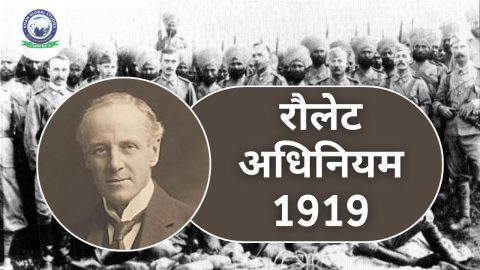The Rowlatt Act of 1919, also known as the Anarchical and Revolutionary Crimes Act, stands as a stark reminder of the oppressive measures employed by the British Raj in India. This act passed in the aftermath of World War I, severely curtailed civil liberties and ignited widespread resentment that fueled the Indian independence movement.
Background: Fear and Control
The years leading up to the Rowlatt Act were marked by growing nationalist sentiment in India. The war had exposed the vulnerabilities of the British Empire, emboldening calls for self-rule. Additionally, revolutionary activities aimed at overthrowing British rule were on the rise.
The British government, fearing a full-blown rebellion, appointed a committee headed by Justice Rowlatt to investigate revolutionary activities. The committee’s recommendations formed the basis for the Rowlatt Act.
Features of the Act
The Rowlatt Act empowered the colonial government with draconian measures:
- Detention without Trial: The act allowed authorities to detain individuals suspected of seditious activities for up to two years without trial. This bypassed the judicial system and placed immense power in the hands of the executive.
- Press Censorship: The act imposed strict censorship on the press, restricting the publication of any material deemed seditious. This stifled freedom of expression and hindered the flow of information.
- Trials without Juries: Trials for sedition were to be conducted by special tribunals without juries, raising concerns about fairness and impartiality.
Drawbacks and Impact
The Rowlatt Act faced immediate and widespread criticism for its blatant disregard for civil liberties:
- Erosion of Rights: The act undermined the fundamental principles of justice and due process. The arbitrary detention provisions instilled fear and insecurity among the Indian population.
- Fueling Nationalism: The act’s repressive nature served to inspire nationalist sentiments further. It exposed the authoritarian nature of British rule and strengthened the resolve for self-determination.
- Jallianwala Bagh Massacre: The nationwide protests against the Rowlatt Act culminated in the tragic Jallianwala Bagh Massacre in Amritsar. This brutal act of violence by British troops on unarmed civilians further deepened the chasm between the rulers and the ruled.
The Rowlatt Act, despite its intended purpose of maintaining control, ultimately backfired. It stands as a symbol of colonial excesses and the unwavering spirit of the Indian people in their fight for freedom. The act was eventually repealed in 1922, but its legacy as a reminder of the importance of civil liberties continues to resonate.
The Rowlatt Act’s Wider Significance
Beyond its immediate impact on India, the Rowlatt Act holds broader significance:
- Global Scrutiny of Colonialism: The act drew international criticism, particularly from other dominions within the British Empire. It highlighted the hypocrisy of a nation fighting for democracy abroad while resorting to authoritarian measures at home.
- Birth of Satyagraha: The Rowlatt Act provided the impetus for the launch of Mahatma Gandhi’s nationwide non-cooperation movement. This marked a turning point in the freedom struggle, shifting the focus towards peaceful resistance.
- Legacy of Civil Liberties: The Rowlatt Act serves as a historical reminder of the importance of safeguarding civil liberties. It highlights the dangers of unchecked government power and the need for a robust legal framework to protect individual rights.
Conclusion
The Rowlatt Act of 1919 stands as a dark chapter in India’s colonial history. While it aimed to quell dissent, it instead fueled the flames of nationalism and resistance. The act’s legacy extends beyond India, serving as a cautionary tale for governments around the world on the perils of curtailing civil liberties. The Rowlatt Act reminds us of the enduring struggle for freedom and the importance of a just and equitable society.




